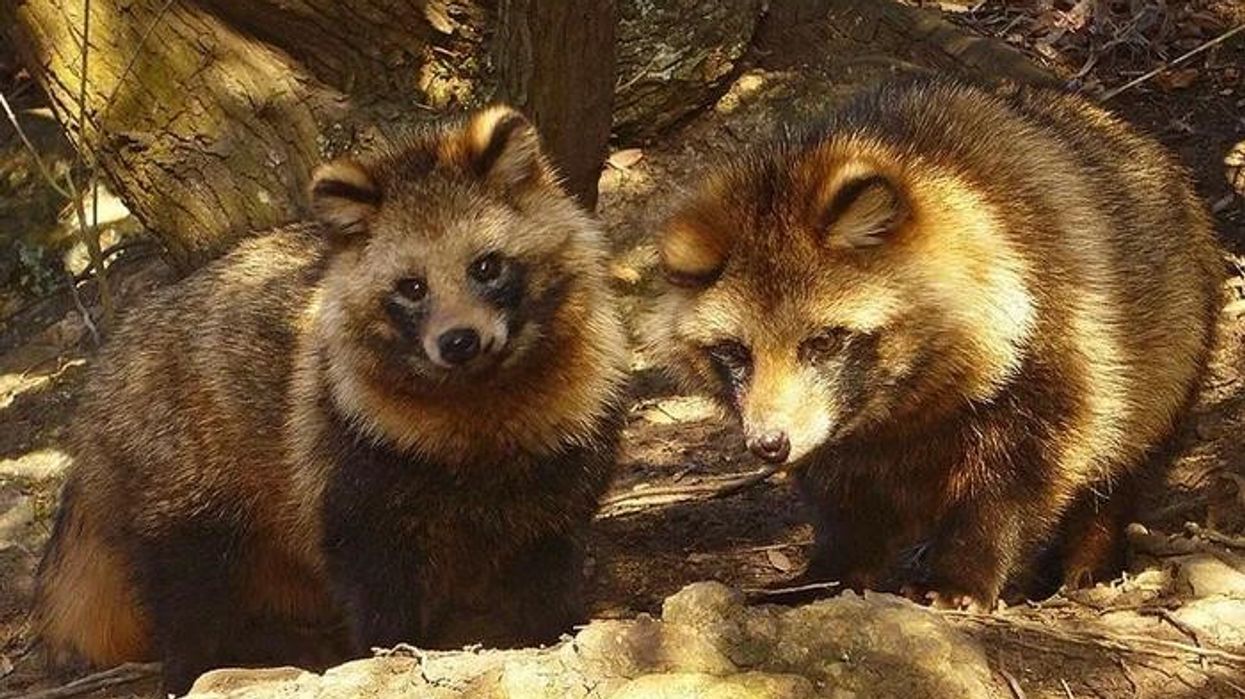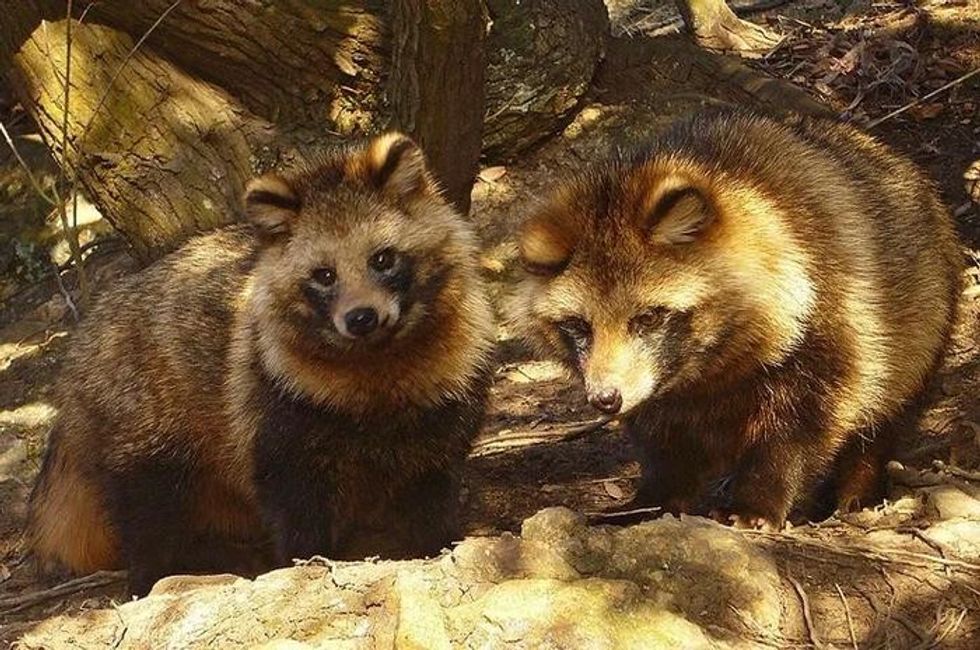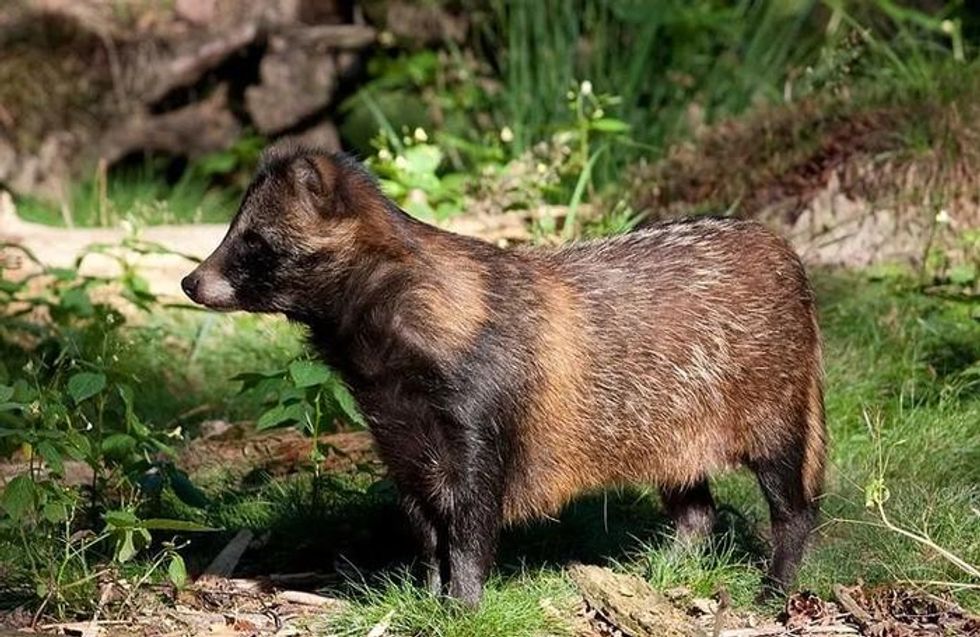The tanuki is also known as the Japanese raccoon dog. This creature is native to Japan. In Japanese folklore, the tanuki raccoon is said to be a shape-shifting animal.
These shape-shifting tanuki dogs can take any shape that they desire. This species looks exactly like a raccoon but is more like a dog than a raccoon. They are more closely related to foxes than dogs.
In Japanese mythology, Nihon Shoki the raccoon dogs are depicted as bake-tanuki. Tanuki is a notable trickster. The tanuki using their growl at each other is a way of communication between that species.
Tanuki can be seen almost everywhere in Japan, whether it be homes, shops, or offices. Here are some of the most interesting facts about the tanuki dog for your perusal. Afterward, do check our other articles on lemming facts and fossa facts as well.
Tanuki Interesting Facts
What type of animal is a tanuki?
A tanuki is a furry raccoon dog. It has a very special place in Japanese folklore where it commonly appears as a shapeshifter or a trickster. These trickster creatures are related to the North American raccoons.
What class of animal does a tanuki belong to?
A tanuki belongs to the mammals class of animals. The tanuki and North American foxes are the only two canids, unlike dogs, foxes, and raccoons, who can climb the trees.
How many tanukis are there in the world?
The current population of the tanuki in the world is unknown. But these creatures are victims of road accidents in all their ranges. That is why tanuki's population has decreased over the years.
Where does a tanuki live?
A tanuki lives in the woods. These tricksters are also found near human settlements.
What is a tanuki's habitat?
A tanuki is found in the wilds. The habitat range for this creature includes deciduous forests, evergreen forests, farmlands, coastal zones. The tanuki prefers to stay near a water source to ensure quick access. They like habitats where there is moisture and favorable food. Moist forests give them thick underbrush where they hide and hibernate.
Who does tanuki live with?
The tanuki raccoon dog lives with other animals from their own species. These dogs are usually found in pairs with their mates.
How long does a tanuki live?
A tanuki has a lifespan of up to 11 years. The tanuki animal has a moderate life expectancy though many of them are killed at a young age.
How do they reproduce?
The tanuki breeding season is from February to April. They are monogamous species. Tanukis reach sexual maturity at the age of 8-10 months. Males fight with each other to win over females.
Females can mate during the estrus period, which lasts six to seven days. The copulations occur during night or dawn. The gestation period is 61-70 days. After birth, both the parents take an equal part in raising their pups. The lactation period is for 45-60 days.
What is their conservation status?
The conservation status of the tanuki is of least concern at present. But their population trend has been decreasing.
Tanuki Fun Facts
What does tanuki look like?
The tanuki ranges in colors from buff, brown, tan to silver, gray, and black. They have a thick and long fur coat to protect them in winters. Their appearance is very similar to raccoons.
They, too, have masks around their eyes. Their ears are triangular and short. The tail of a tanuki is darker in color than the rest of its body and has more fluffy fur.
How cute are they?
The tanuki is extremely cute. The tanuki’s raccoon-like appearance with a soft fur coat makes them look absolutely adorable.
How do they communicate?
Tanuki has a high-pitched voice. But surprisingly, their vocals sound more like cats than dogs. Males fighting for females are seen yelping and growling at each other. Like all other dogs, raccoon dogs do not bark.
How big is a tanuki?
Tanuki size range is 19.6-25.6 in (49.7-65.0 cm) while the tail length is in the range of five to seven in (12.7-17.8 cm).
How fast can a tanuki run?
A tanuki can run as fast as 24.85 mph (39.9 kph). They are very fast runners, and this speed helps them while hunting.
How much does a tanuki weigh?
The tanuki females weigh up to 12.12 lb (5.49 kg), and males weigh up to 13.22 lb (5.99 kg). It is normal weight in comparison to their body size.
What are the male and female names of the species?
Males of the tanuki species are called dogs, and the females of the tanuki species are called bitches.
What would you call a baby tanuki?
A baby tanuki is called a pup.
What do they eat?
The tanuki is an omnivorous species. Their diet contains a variety of insects, reptiles, amphibians, smaller mammals, rodents, mollusks, birds, eggs, fish, frogs, gerbils, voles, etc. They also feed on fruits, nuts, and berries.
Are they aggressive?
The tanuki being wild animals, often show surges of aggression. They are adapted to the environment where it is either fights or dies. It has made a permanent impact on the species, making them aggressive in general.
Would they make a good pet?
The tanuki is a wild animal. Even though they are dogs, they are not at all domesticated. They have a tendency to bite. Taming them is almost an impossible task. That is why the tanuki pet would not be a good idea.
Did you know...
These raccoon dogs are the only dogs that hibernate.
In the local culture, this dog has often been showcased with an oversized scrotum, leading to confusion and comedy at the same time.
In Japanese folklore, the leaves on the head of a tanuki are a source of the mystical powers of the animal. It is famous for featuring in Japanese art as mischievous and jolly, a master of disguise and shape-shifting creatures.
Why is tanuki translated as raccoon dog?
The Japanese word tanuki is very often mistranslated as raccoon. But tanuki are not really raccoons; they are more like dogs. Since tanuki is the Japanese name assigned to this animal, the word tanuki is translated as raccoon dog. It is the same case as the foxes.
Why does tanuki have large testicles?
The tanuki does not actually have a huge scrotum. It has a normal-sized scrotum. The association of tanuki with large scrotum comes from Japanese mythology, where the Japanese were using their stretchy skin to stretch gold and the tanuki using them as bags as gold. This means the Japanese associate stretching money.
Here at Kidadl, we have carefully created lots of interesting family-friendly animal facts for everyone to discover! For more relatable content, check out these Virginian opossum facts and Arctic fox facts pages.
You can even occupy yourself at home by coloring in one of our tanuki coloring pages.









